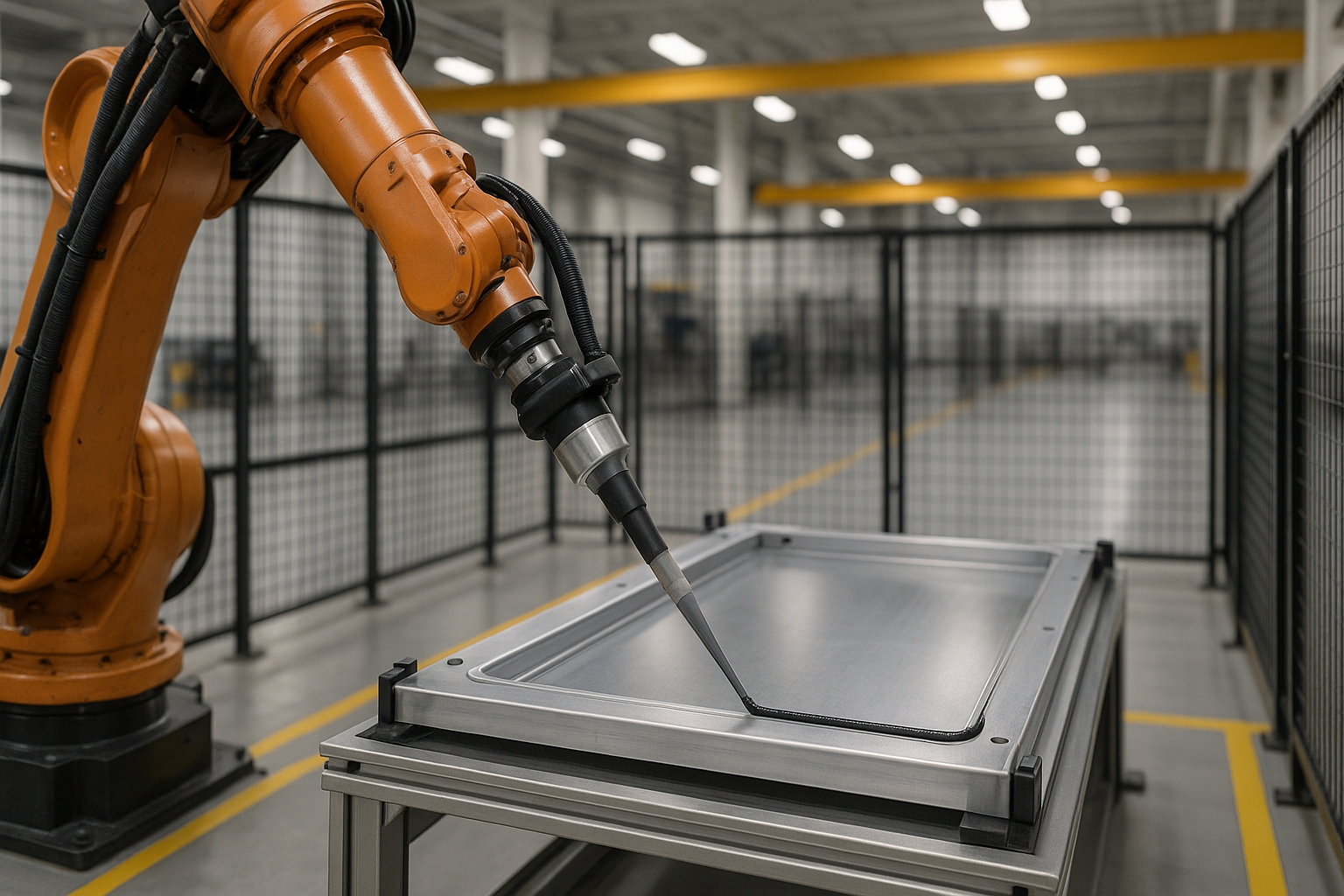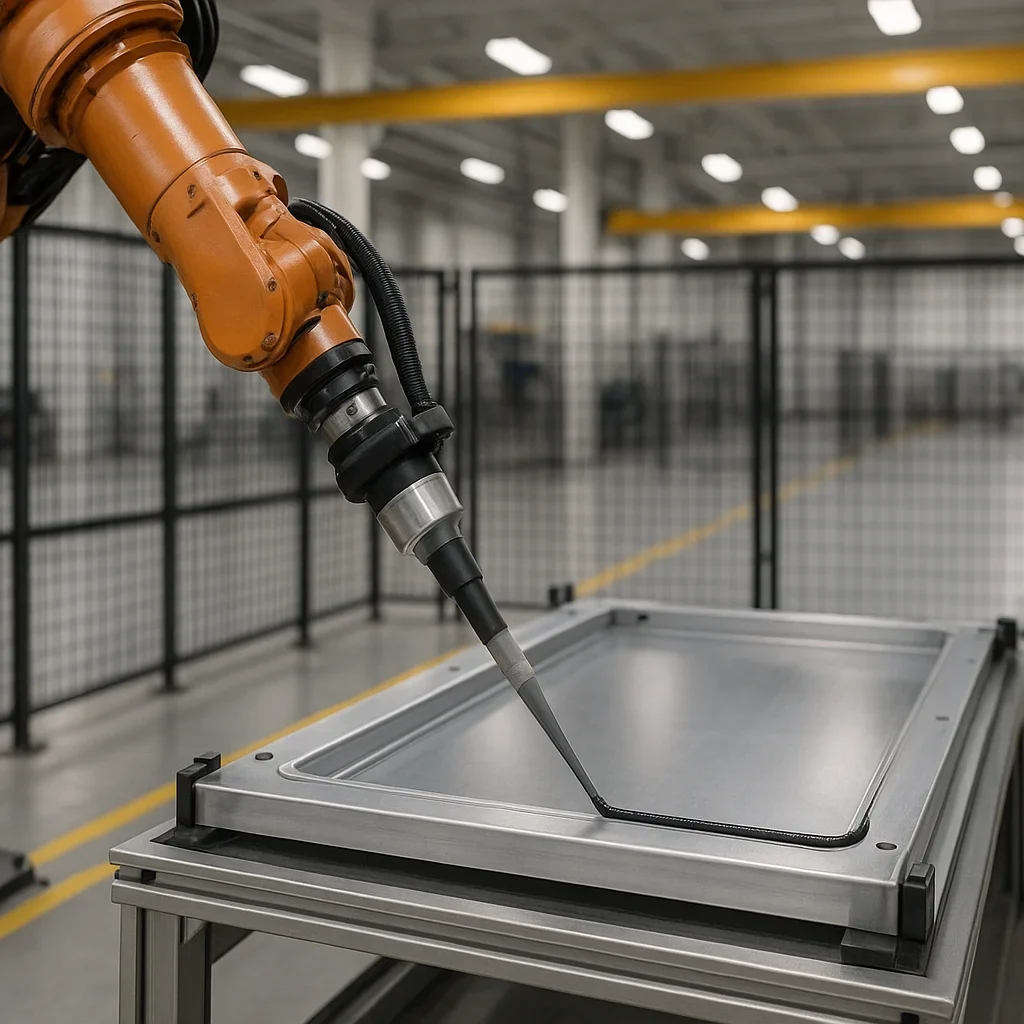

Adhesive Bonding
NEXAMS Leading Innovations in Adhesive Bonding for High-Performance Assembly Solutions
Adhesive bonding is a precise and reliable method of joining plastics, metals, or composites using engineered adhesives instead of mechanical fasteners or welding, and at NEXAMS we approach each program with empathetic, ethical decision-making that respects real production constraints while coordinating transparently with qualified Vendors and experienced Manufacturers to keep quality consistent and timelines practical.
Our adhesive bonding manufacturing process covers rigorous surface preparation, controlled adhesive application, calibrated clamping, and validated curing so every joint achieves predictable strength and repeatability; we also add human-like Support through design for bonding reviews and risk-based inspections that fit local compliance needs without slowing your build.
NEXAMS provides adhesive bonding assembly techniques for metals, plastics, and composites across high-volume lines and precision electronic subassemblies, maintaining traceability and cleanliness; where flexibility is essential, we integrate adhesive bonding flexible bonding strategies that distribute stress, resist vibration, and remain serviceable for maintenance teams working with nearby partners when lead times are tight.
For rapid assemblies and small joints, our adhesive bonding cyanoacrylate bonding workflows deliver fast handling strength; where aesthetics and chemical resistance matter, adhesive bonding solvent-based adhesives yield seamless, transparent bonds, and we complement these with high-grade silicone sealant to elevate environmental sealing, moisture protection, and durability—coordinated with a single accountable Supplier chain for smoother launches.
Benefits of Adhesive Bonding Technology
Uniform stress distribution across bonded joints that extends component life and aligns with safety-first decisions.
Ability to bond dissimilar materials with ease for lighter, more efficient structures.
No heat-induced distortion on sensitive parts, preserving tolerances and finishes.
Clean appearance without visible fasteners or weld marks for premium aesthetics.
Improved vibration damping and noise reduction for user comfort and reliability.
Automation-friendly assembly processes that scale predictably on the line.
Lightweight structural designs that reduce energy use and shipping cost.
Versatility for complex geometries and thin walls without cracking or creep.
Flexible bonding techniques that improve longevity in dynamic load cases.
Silicone sealant integration that enhances environmental and thermal resistance in harsh conditions.
Industrial Applications and Use Cases
Aerospace: Lightweight composite panel bonding and structural sealing with silicone sealant under audited process controls.
Automotive: Body panels, glazing, and trim assemblies leveraging consistent bead control and fixture strategies.
Electronics: Compact device assemblies using adhesive bonding cyanoacrylate bonding for fast takt times.
Construction: Structural glazing and façade panel bonding using solvent-based systems for clear edges.
Medical Devices: Precision housings validated by an adhesive bonding quality control method for compliance.
Renewable Energy: Blade shell bonding and shear webs using adhesive bonding flexible bonding for fatigue resistance.
Materials and Adhesives Used in Adhesive Bonding
Epoxy Adhesives – High strength, versatile cure profiles for structural joints.
Polyurethane Adhesives – Flexible bonding and impact resistance for mixed materials provided by vetted Suppliers.
Acrylic Adhesives – Fast curing, optically clear options for consumer-facing parts.
Methyl Methacrylate (MMA) – Structural, gap-filling performance with minimal prep.
Cyanoacrylate – Rapid bonding for small, precise interfaces and fixtures.
Solvent-Based – Seamless, transparent bonds for display-grade aesthetics.
Silicone Sealant – Long-life environmental and thermal sealing around joints.
How Costing Works in Adhesive Bonding Projects
NEXAMS uses transparent, line-item costing that reflects material selection, joint design, bead length, fixturing, and volume; projects involving adhesive bonding solvent-based adhesives or adhesive bonding flexible bonding may require specialized dispensing and cure control, so we share early feasibility findings and preventive controls openly with your procurement and our trusted Vendors to balance value and risk with continued Support through PPAP or first-article stages.
Alternative Technical Solutions
Mechanical Fastening – Bolts, screws, rivets where detachability or field service is key.
Welding – Permanent metal joining with high strength but less forgiving on heat-sensitive parts.
Snap-Fit – Fast plastic assembly for housings with moderate load expectations.
Thermal Bonding – Efficient for compatible polymers but limited by heat exposure.
Hybrid Bonding – Adhesive bonding assembly techniques combined with fasteners for redundancy and audits approved by quality teams and reliable Manufacturers.
FAQs
Q: What is adhesive bonding and why is it preferred?
A: It is a joining method using engineered adhesives to distribute stress uniformly, bond dissimilar materials, and avoid visible fasteners—an ethical, user-conscious choice for lighter and cleaner products.
Q: How does NEXAMS ensure adhesive bonding quality?
A: We follow an adhesive bonding quality control method including verified surface prep, alignment checks, bead geometry control, and cure validation, documented with lot traceability from approved Suppliers.
Q: Which industries benefit most?
A: Aerospace, automotive, electronics, medical devices, construction, and energy applications where aesthetics, fatigue life, and mixed materials are critical.
Q: What adhesive types do you use?
A: Epoxy, polyurethane, acrylic, MMA, cyanoacrylate, solvent-based systems, and silicone sealant—selected collaboratively with your team and our quality-screened Manufacturers.
Q: Can adhesive bonding handle flexible joints?
A: Yes, adhesive bonding flexible bonding strategies absorb stress and vibration, protecting interfaces and extending service life.
Q: Is cyanoacrylate suitable for structural loads?
A: It is ideal for small, rapid assemblies and fixturing, but for heavy structural loads we recommend structural epoxies or MMA with validated joints.
Q: What role does silicone sealant play?
A: It adds moisture, chemical, and temperature resistance around joints, improving ingress protection and thermal cycling durability.
Q: How does adhesive bonding compare to welding?
A: Bonding avoids melting base materials, preserves finishes, and joins dissimilar substrates; welding can be stronger for metals but risks heat distortion and requires access for tools.
Q: Where do you offer services?
A: We operate globally with qualified networks across Asia, Europe, the Americas, the Middle East, Africa, and Oceania through coordinated Vendors and logistics.
Q: What are the maximum estimated shipping times from the factory to global regions for Brazing parts via sea and air?
A: By Sea: Asia: 15–20 days, Europe: 25–35 days, North America: 30–40 days, South America: 35–45 days, Middle East: 14–18 days, Africa: 20–28 days,
Oceania: 22–30 days
By Air: Asia: 1–3 days, Europe: 3–5 days, North America: 4–6 days, South America: 5–7 days, Middle East: 1–2 days, Africa: 3–5 days, Oceania: 4–6 days
